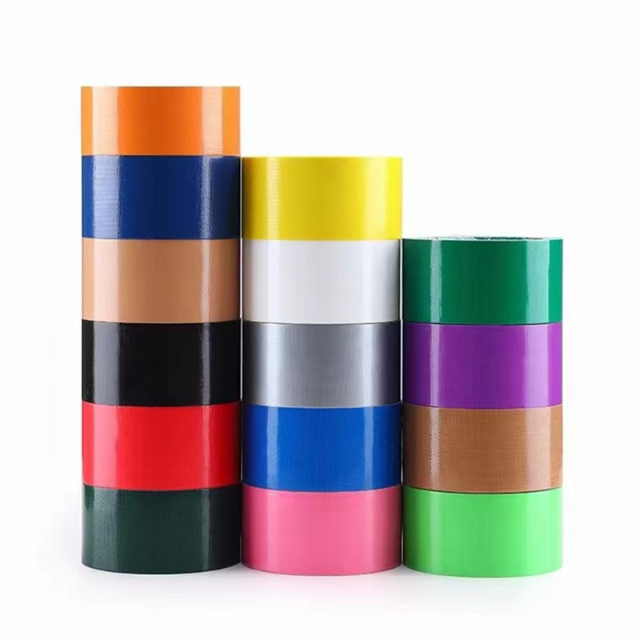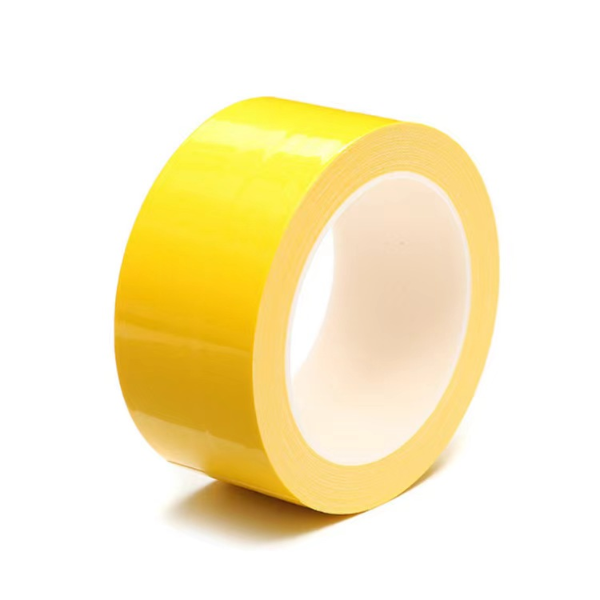
When you use duct tape in construction, packaging, or repair projects, you probably expect it to hold materials firmly and then peel away when the job is done. Yet many contractors, facility managers, and distributors face the same frustration: residue. Sticky leftover glue can damage surfaces, slow down workflow, and even cause disputes with clients. If your project schedule is tight, the last thing you want is extra labor scraping adhesive off metal, plastic, or flooring.
This is why more industrial buyers now look for tapes that combine strong adhesion with clean removal. One brand that has made this focus central is QKD Tape. As a manufacturer specialized in high performance adhesive products, it provides not only cloth duct tapes but also a wide portfolio of solutions for packaging, construction, and decoration. The company offers OEM and ODM services, allowing distributors and project contractors to order tape rolls that match their size, color, and branding requirements. With a strong base in production technology and a commitment to reliable supply, QKD Tape has become a long term partner for businesses worldwide. For building decoration and industrial applications, their team highlights both durability and usability, qualities that matter when tape is used daily in demanding environments.
Why Does Residue Remain After Tape Removal?
Residue is usually the result of glue transfer. Standard duct tapes use a rubber based adhesive that breaks down under heat, humidity, or long term pressure. When you peel it off, the adhesive separates from the backing but sticks to the surface.
Environmental Conditions
In construction sites or warehouses, temperature and moisture levels change constantly. Adhesive softens in high heat and hardens in the cold. Both extremes make clean removal difficult.
Surface Compatibility
Not all surfaces react the same way. Painted walls, stainless steel, and PVC flooring each have different textures. Rough or porous materials often trap glue more than smooth ones.
What Problems Can Residue Cause?
The presence of sticky residue is not just an aesthetic issue. In business operations, it can affect timelines, cost, and even reputation.
Extra Labor and Time
If a team has to spend hours scraping off leftover glue, it delays the project. For a flooring contractor, even a one hour delay can cause overtime fees.
Material Damage
Residue often bonds tightly, and removing it with solvents may discolor surfaces. On metal, it can trap moisture and cause corrosion over time.
Client Satisfaction
Customers expect a professional finish. Residue on newly installed carpet edges or display boards creates the impression of low quality workmanship.
How Can You Choose a Clean Removal Duct Tape?
When selecting duct tape for projects, you need more than strength. You need balance: adhesion that holds firmly but does not overstay its welcome.

Look for High Performance Cloth Backing
A strong cloth backing distributes stress evenly, preventing adhesive from melting into the surface. This is important in heavy duty packaging and sealing applications.
Evaluate Waterproof Properties
A waterproof tape resists moisture penetration, which helps adhesives maintain stability. This reduces the chance of glue softening and leaving residue.
Test Ease of Tearing
Clean removal often goes hand in hand with easy tearing. If a tape tears smoothly by hand, it usually indicates balanced adhesive and backing quality.
Where Does Clean Removal Tape Make a Difference?
Clean removal is especially critical in industries where efficiency and appearance matter.
Construction and Building
On building sites, cloth tape is used to hold insulation, secure protective sheets, and seal joints. A clean removal tape avoids extra cleaning before final inspection.
Heavy Duty Packaging
In warehouses, packages may be sealed for weeks before opening. Residue free removal keeps cartons reusable and prevents contamination of goods.
Carpeting and Flooring
Installers often use cloth tape to hold carpets temporarily. Residue can ruin floor surfaces, so residue free tape saves both cost and reputation.
Outdoor and Emergency Use
During camping or site repairs, you may use tape for temporary fixes. Clean removal prevents sticky patches on gear or tools, especially under rain or heat.
For all these scenarios, products like the Colorful Cloth Duct Tape combine multipurpose strength with residue free removal, which is why they are gaining traction in both industrial supply chains and retail channels.
Why Does Color Matter in Duct Tape?
The performance of the tape is crucial, but color also adds value.
Visual Management
Different colors allow you to mark zones, label equipment, or indicate safety warnings. On a job site, red may signal hazard areas, while green can mark safe walkways.
Branding Opportunities
For distributors or companies ordering OEM rolls, color customization adds brand recognition. A roll printed in company colors can become part of the identity.
Craft and Decoration
Demand from the craft and decoration market is strong. Schools, stage builders, and event organizers prefer colorful tape that removes cleanly without damaging surfaces.
What Role Do OEM and ODM Services Play?
Large buyers and distributors often require tailored solutions. OEM and ODM services allow them to match product features with market demand.
Tailored Width and Length
Not every industry needs the same tape size. A contractor may prefer wide rolls for carpet laying, while a packaging distributor may order narrower rolls for box sealing.
Branded Packaging
With ODM support, you can have private label packaging, making the product ready for retail shelves without additional steps.
Industry Specific Formulas
For example, a tape formula for plumbing repairs may focus more on water resistance, while a tape for stage setups emphasizes clean removal from painted wood.
These customizations not only reduce procurement complexity but also give you flexibility to serve different markets with a single supplier. You can explore more about these services directly on QKD Tape’s OEM and ODM page.
FAQ
Q1: What makes cloth duct tape different from standard duct tape?
A: Cloth duct tape uses a fabric backing, giving it higher tensile strength and flexibility compared to standard polyethylene backed tape.
Q2: Can clean removal duct tape hold up in outdoor conditions?
A: Yes. High performance versions are waterproof and maintain adhesive stability under rain or sunlight, making them reliable outdoors.
Q3: Is colorful duct tape only for decoration?
A: No. While it works well in crafts and visual marking, colorful cloth duct tape is also widely used in construction, packaging, and industrial labeling.
Q4: How can you tell if a tape will leave residue?
A: Test it on a small surface. Tapes with balanced adhesive strength, waterproof properties, and durable backing usually peel away cleanly.
Q5: Are OEM and ODM orders available for cloth duct tape?
A: Yes. Suppliers offer customizable widths, colors, branding, and adhesive formulas to meet specific business requirements.
